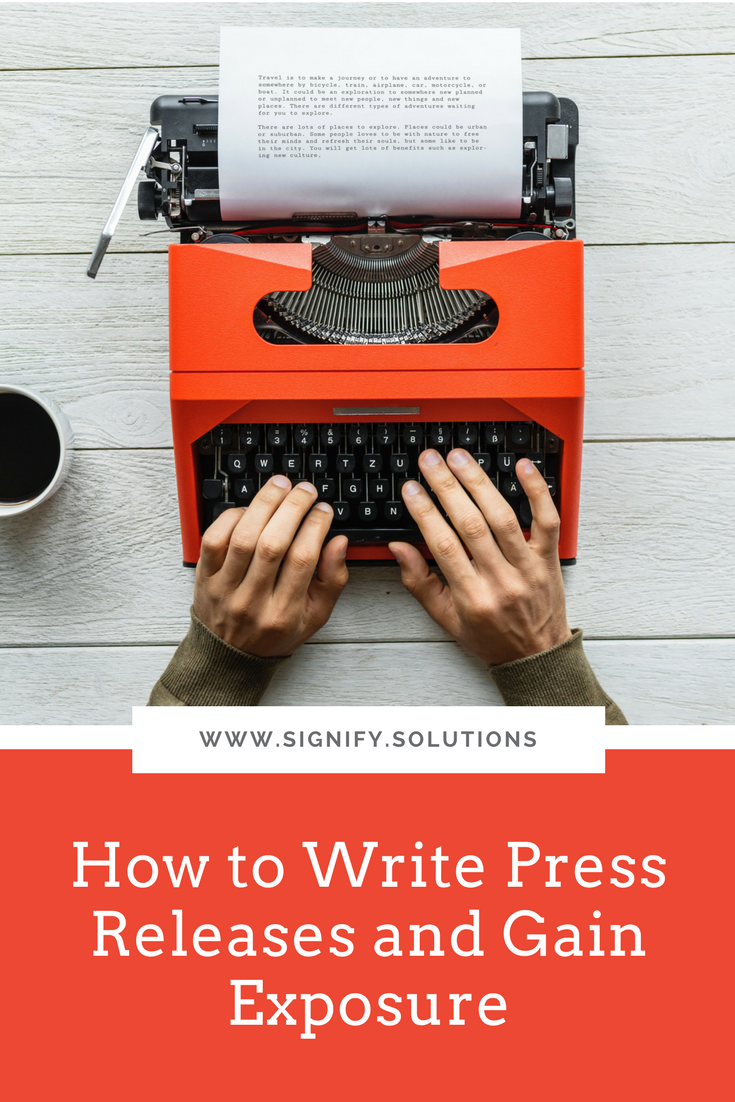If you're like many nonprofit or social enterprise leaders I meet, you have a beautifully designed blog, but it's a little barren. In fact, you really struggle to get your blog updated. And when you finally do, you check the box, pat yourself on the back, and call it a day. But it's not enough to just write the post—it needs to get read.
Before we even address any potential issues with your marketing and promotion of the blog post, let's first address the readability. (And, yes, that's a thing.)
Does this sound familiar: Someone lands on your little labor of love, maybe skims a little, and then promptly leaves. All without taking action, or worse, even taking in your content.
Here you find yourself with a post that took precious time and energy, but didn't actually get the job done. It's finished, sure, but it's not effective. It's not working hard enough for you. Houston, we have a problem.
You can sit around all day long, cross your arms, and shout, "It's not me, it's you!" ... but is it? Here are a few blog writing tips that will help ensure your post gets read, and better yet, acted on.
Formatting Your Blog Post
Not sure if you've noticed, but the the look of blog posts has changed quite a bit over the last, few years. They are no longer just little (or big) essays waiting to be consumed. Everyone's vying for your attention, and here's how the winners are getting noticed.
Sub-heads or headers: Like it or not, people often skim content, so after your introduction, use sub-heads in the body text to preview what's coming up. This also helps with SEO, so it’s good to use keywords (the main topic of your post) in sub-heads as well, or at least use a few words to describe what you’ll be talking about next.
Short paragraphs: Because it’s common for people to view websites on smaller screens, like cell phones and tablets, use smaller paragraphs of just a few sentences. If you write a long paragraph, how you can break it up so that it’s more readable on any sized screen? People don't want to look at a wall of text on a small screen.
Images: We may be living in a material world, but we're also living in a visual one. You need at least one image/video/graph/etc. to accompany your post. Not only does this illustrate your topic and help grab someone's attention, but for anyone who wants to save your post to a site like Pinterest, it makes things easier.
Keywords: You also want to make sure and mention your topic several times in the body copy for SEO. And you can use it in different phrasing, too. For example, if your post is about “content creation,” you can use that phrase, as well as “creating content” and “content marketing” and similar things. Once again, we're trying to appease and appeal to the almighty Google in hopes that it will recognize us and call us worthy. Agree or disagree, it's the world we live in if we want people to find our little corner of the internet.
CTA or Call to Action: At the end of every post should be a CTA. (You can also sprinkle them throughout.) What do you want people to do as a result of reading your blog post? You can lead them to additional content, make a donation or purchase, give you their email, sign up for your newsletter, download something, etc. There are a lot of options, so be sure to include one. Get them to interact with your content to make it, your cause, and your organization more memorable. This helps you build a relationship with someone.
Don't Forget Consistency
If you've read even a couple of posts on this blog, you've likely seen some form of the word "consistency." It is a huge soap box for us—because it's that important! So, along with formatting your blog post to make it more read-worthy, let's take a look at a few things that should always remain the same, even when the topic changes.
Remember your audience: For this blog, we consider our audience to be leaders or key employees of nonprofits and for-profits with a social mission. They're typically at a small organization where people wear multiple hats. And they have a desire to improve their marketing and communications. Everything we write keeps these folks in mind in order to serve them better.
Tone and voice: If you haven't done this yet, determine how your organization "sounds" so that tone and voice remains the same. This is called your brand voice. Here at Signify, we want to sound friendly and professional, with a side of humor. (Because humor just makes the world better.)
Refrain from jargon: Unless you have a very narrow niche that understands your jargon, like rocket scientists or brain surgeons, stop using words and phrases specific to that group. Don't make your audience strain to understand what you're saying or you'll lose them. For example, here on this blog, we try to make marketing and communications easy for anyone in our target audience to understand and act on.
Grammar, punctuation, and similar do-dads: We touched on this last week, but for repeat readers, you need to make sure your style is always the same from post to post. Go read that post with advice from editors. It’s chock full o’ wisdom!
Pro Tips for Your Blog Posts
We know, we know. You already have a long list to work on where your blog posts are concerned. But for those of you who may be a little further ahead, or think overachieving is a way of life, here are a few other things to make your words stretch further.
Work on your headlines: You already know this, but your blog headline is super important. We use this headline analyzer to help determine if our headlines will entice readers. Aim for a score of above 70, just like in school!
Add internal links: Link to other posts or pages within your site. Like when you talk about promoting a launch, you can link to another place where you talk about that same subject. ( <-- See what we did there?) This keeps people on your site longer because they're looking around at all the pretty content you've created. This is obviously great for your website, but when people stick around, it also tells Google that your site is a good one, and they should recommend you more.
Add external links: On a similar note, link to other websites when you can as well. It helps build the credibility of your own site in Google's eyes. So, when you mention that you're attending the Plywood Presents conference in a few months, make it easy for people to get there. ( <-- Did it again!)
Briefly consider length: There are MANY opinions about what the "right" length of a blog post should be, but here we ascribe to a single philosophy: cover the topic well. We write a minimum of 500 words, because again, you want to have enough content for Google to search, but past that, there aren't a lot of length requirements. Just deliver on the promise of your headline to keep your readers happy.
Maybe add a bio: Unfortunately, the sales cycle isn't like IKEA. Potential customers and donors don't all show up on the same page of your website, walk through it in one direction, and then end up on your sales or donations page. (Sigh.) For that reason, every blog post contains a short bio and photo of the writer. So, if I (Kristi) only get someone to read one post on this blog, they can at least also catch a little bit about me and what my company does.
SEO and Keywords: To be completely honest, we don't focus heavily on SEO around here right now. As the team grows and capacity expands, we'll work on it, but for now, we've just dipped our toes in.
The gist, however, is to include keywords (the words you want the post to be known for) in a few different places:
blog headline/title
URL slug (the part that comes after your domain)
First paragraph
Alt tags (the “names” you can give to images behind-the-scenes)
One or more subheads
Sprinkled multiple times throughout the content
If you’re on WordPress, be sure to grab the Yoast SEO plug-in, which will make things much easier. If you’re on Squarespace, like us, here’s a link to their SEO checklist. You can also visit Megabolt Digital, where we get a lot of our SEO info from. Meg makes SEO very easy to understand!
Promoting Your Blog Post
We'll just cover this briefly here, but you can have the best-written, most beautiful post in the world, but if no one reads it, it won’t do you much good. Here are some of the ways we promote our posts, and you may think of others that work for you as well.
Facebook (our own Page and FB groups we belong to)
Special Features (our monthly newsletter)
Guests (If it’s a guest post or someone/company is prominently featured, we tag them on social media so that they can share as well.)
Read the other posts in this series:
PIN THIS POST FOR LATER:
I'm Kristi Porter, and I started Signify to provide writing, consulting and strategy services to nonprofits and for-profit organizations with a social mission, primarily through copywriting, marketing, and business communications. I believe that cause-focused organizations like yours are the future of business. You're proof that companies can both make money and do good. And I'm here to help you get noticed and grow. When you succeed, we all win.










































